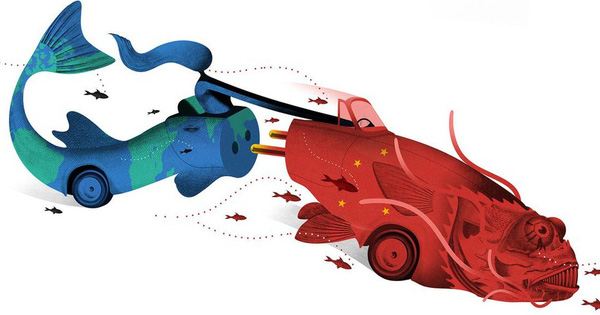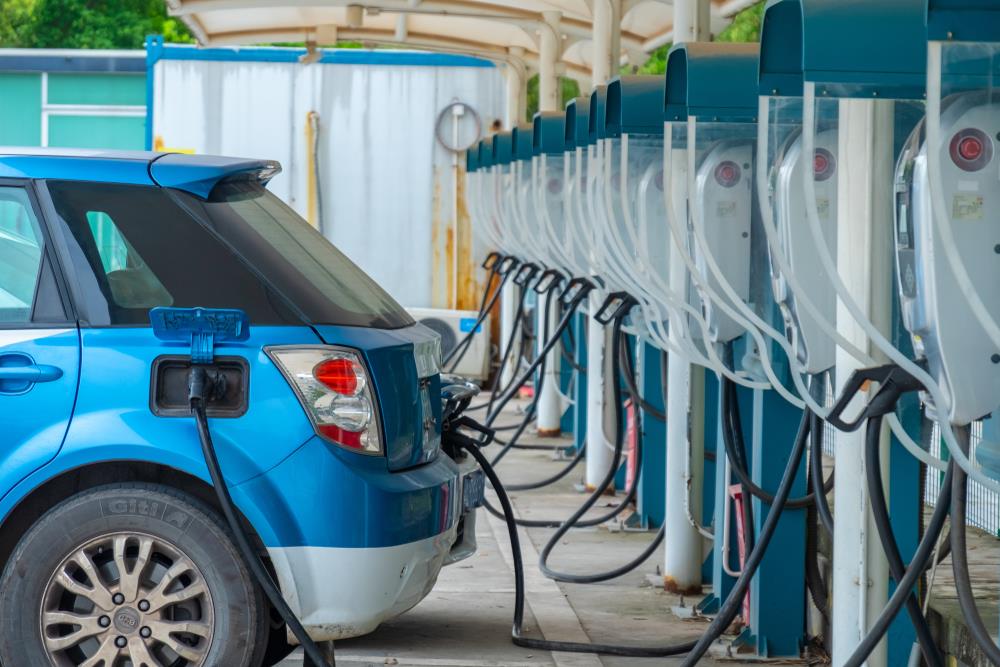Ambitious to dominate the global electric vehicle market, China uses the “catfish” tactic to reach out to the “big sea”
Schumpeter doesn’t own a car. The last time he bought a car was a diesel-powered Volkswagen in 2015, days before the automaker’s emissions cheating scandal broke out. He was so terrified that when the car’s engine caught fire, he swore that he would never buy another car. Instead, he rides a bicycle.
Since then, he lives in zero-emission satisfaction. At least he did until the growing number of electric vehicles signaled even more intrigue. Now, his lust for cars is on the rise again, but with a more awkward predicament.
Some of the hottest electric car models in Europe are made in China or owned by Chinese companies. With the fear of splitting commerce into ideological blocks, is it a big concern like Volkswagen’s emissions scandal?
The “catfish” effect

To answer that question, first consider the “catfish effect” in China. This is the idea of releasing predators so that weaker opponents can swim faster. For many years, China led the world in the production and purchase of electric vehicles. However, the cars are heavily subsidized and of poor quality.
Electric vehicles reflect the government’s desire to clean the air and take a shortcut to the internal combustion engine, a technology that China is a latecomer to. Customer satisfaction is only the second criterion. No Chinese electric vehicle maker has beaten the world like Huawei did in the smartphone space, before the US embargo in 2019.
That was also the year that Tesla set up a factory in Shanghai and rolled out Model 3s from the production line. According to Gregor Sebastian of the MERICS institute in Berlin, Tesla has become the epitome of a catfish.
This effect is similar to the benefit that Apple’s iPhone production in China brings to the smartphone market in the country. Local suppliers have had to upgrade their businesses to meet international standards.
Similarly, the ambitions of Chinese automakers also increased with the arrival of Tesla. The result was a rapid transition to electrification. The world’s top battery maker BYD has become China’s largest seller of electric and hybrid vehicles. On April 4, the company said it had stopped producing internal combustion engine vehicles completely. As for Tesla, its sales are booming.
However, no Chinese electric vehicle maker is an export superpower. Stock market analysts are playing up the potential, hoping that this will yield a valuation similar to Tesla’s.
But most of China’s electric vehicle exports are purely from foreign brands, such as Tesla, or foreign brands that do business with China like BMW.
Foreign brands make up the majority of the 296,000 Chinese-made electric and plug-in hybrids sold abroad in 2021. This is more than four times that of 2020. Due to US tariffs high, buyers tend to other popular markets such as Europe and Southeast Asia.

Tesla factory in China. Photo: Xinhua
The Rise of China’s “Electric Vehicle”
China’s biggest electric vehicle companies are adopting a variety of export strategies to keep up with the trend. State-owned auto company SAIC is entering Europe under the guise of MG, the classic British sports car brand it bought in 2007. The company retains its Chinese identity in its captivating octagonal logo. droopy. That could be the reason sales will hit more than 52,000 vehicles in Europe in 2021, double that of the previous year, and the majority of which are electric.
Like Nio, the company BYD hopes to compete with luxury brands like Mercedes. BYD has made tram-friendly Norway the springboard for their forays into Europe.
Scott Kennedy of the Center for Strategic and International Studies, a Washington-based think tank, said that in Southeast Asia, the strategy of Chinese businesses is to “take the countryside around the city”.
That means Chinese companies have to sell cheap products in places where Western companies don’t dare to take the risk to strengthen their supply chains. Taxi fleets are a common target for companies like BYD.
Until recently, it was considered that such low-priced brands could penetrate developed as well as developing markets. The Chinese electric vehicle market is comprised of many failed competitors and is looking for consolidation. Companies lack foreign sales networks compared to global competitors.
They do have their own set of advantages, however, including access to the world’s best battery supply and some cases of more complex software than their European rivals. China is also attaching more importance to international safety standards.
If Chinese manufacturers grow stronger, this will not only be good for the car market. The more attractive China’s high-quality products are to international consumers, the more role China can play in sustaining global trade. Electric vehicles include stressful strategies that can be a burden on the commercial system.

Charging public electric vehicles in China. Photo: Chintung Lee
Electric vehicles support globalization
Electric vehicles rely heavily on semiconductors, which have become a sore problem in China. China’s battery advantage is a worry for the West.
The collection of personal information to improve transportation routes, tolling and self-driving technologies raise conundrums about privacy, data storage, and cybersecurity.
The electric vehicle industry also faces a trade war. Since 2018, the US has levied 25% tariffs on Chinese batteries, electric motors and other electric vehicle components.
Most Western carmakers have enough capital to keep supply chains open and maintain access to the Chinese market, where they don’t want to put up additional trade barriers. However, they know that China is treating them as “catfish” to improve its industry.
At any point, China could decide that it’s done its job. That could send the entire global market, including China, into turmoil.
However, the catfish effect can work in both directions. Last month Bloomberg reported that CATL, the Chinese battery giant, is considering building a $5 billion factory in North America.
Jim Greenberger of naatBatt International, a battery trade group, said he would welcome this as long as CATL brings the battery technology and know-how to promote technology transfer to US companies.
That is the miracle of globalization. Over time, competition and cooperation lead to an exchange of ideas, to the benefit of all. But globalization will not last if geopolitical tensions escalate, splitting the world economy into competing blocs. If you feel uncomfortable buying a Chinese car, remember that you are advocating globalization.
Source: The Economist
at Blogtuan.info – Source: genk.vn – Read the original article here

